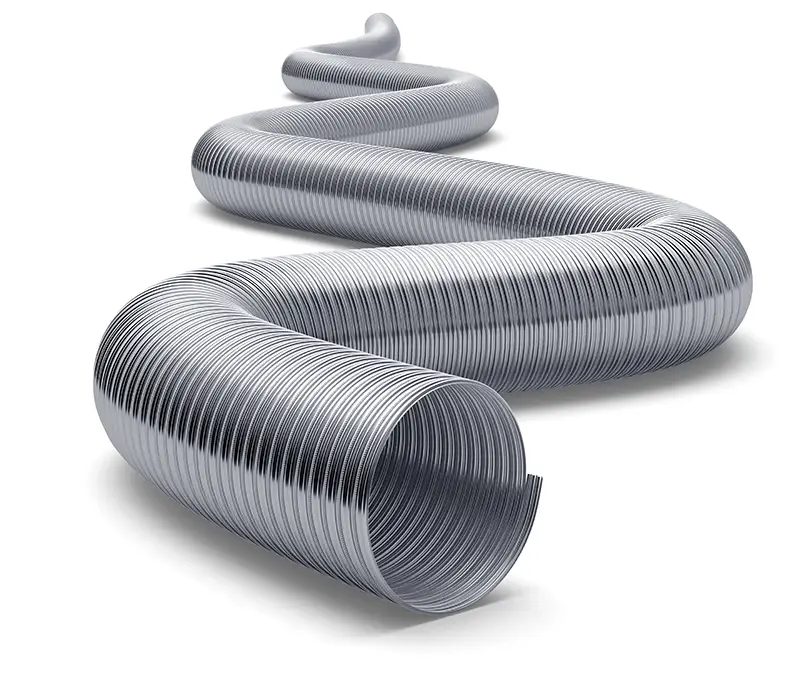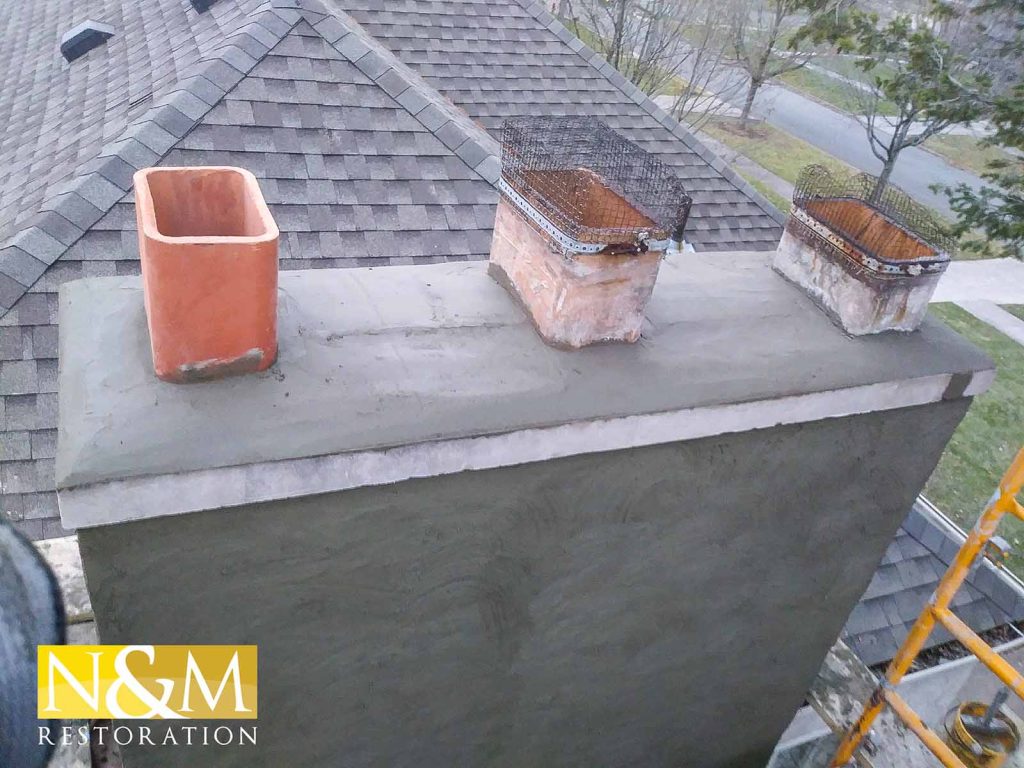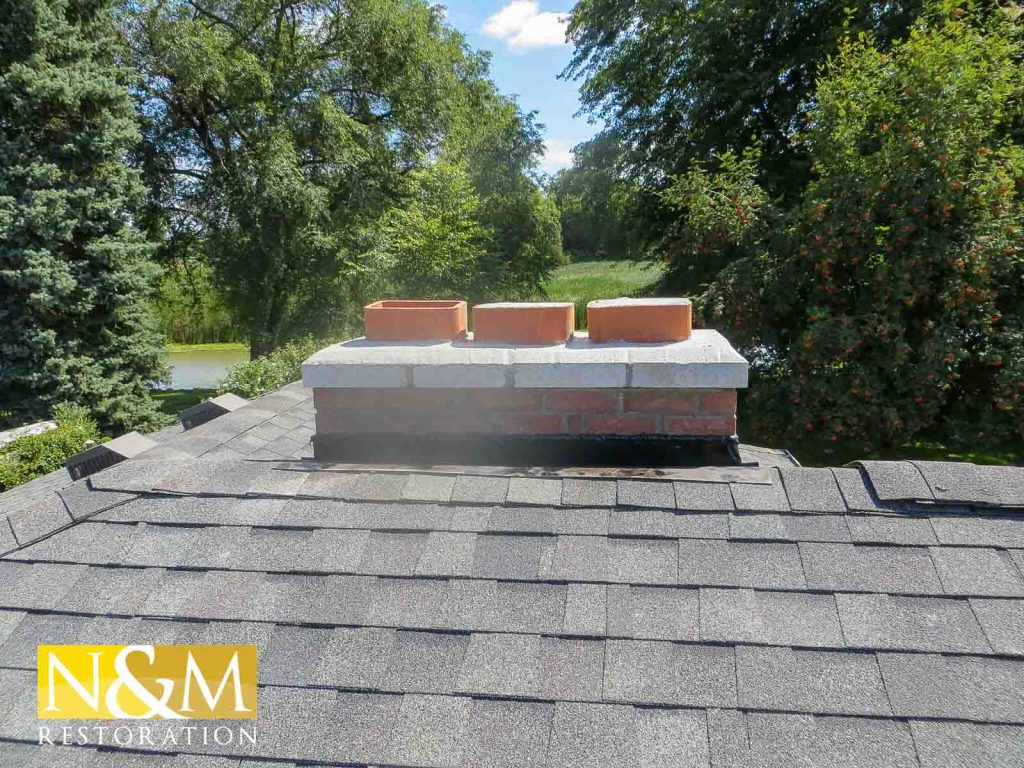What we’ll answer
- What is a Flue Liner?
- Why are Clay Chimney Flue Liners Popular?
- Benefits of a Clay Chimney Flue Liner
- Installing a Clay Chimney Flue Liner
- Maintenance and Longevity
- Safety Tips and Considerations
What is a Chimney Flue Liner?
The Basics
A flue liner is an inner layer within the chimney, guiding the smoke and gases the fire produces safely out of your home. It protects the house from heat transfer to combustibles and provides a corrosion-resistant, smooth surface that encourages better airflow, ensuring that dangerous gases are efficiently expelled.

Types of Flue Liners
There are various materials used for flue liners, including:
- Metal: Often stainless steel or aluminum.
- Clay: Either tiles or cast-in-place. We recommend a Clay Chimney Flue Liner.
- Cementitious pre-cast.
This article will focus on clay flue liners, a popular and traditional choice for many homes.
Why are Clay Liners Popular?
Historical Context
Clay chimney flue liners have been the go-to option for centuries. Their history goes back to Roman times when clay tiles were used to line chimneys, ensuring a safer and more efficient system for removing smoke.

Natural Advantages
Clay is naturally resistant to high temperatures, making it ideal for chimneys. It’s also less susceptible to flue gases’ corrosive effects than some metals.
What Are The Benefits of Clay Flue Liners?
Safety First
The primary benefit of any flue liner is safety. Clay liners:
- Prevent rapid heat transfer to combustibles, decreasing fire risks.
- Protect masonry from corrosive byproducts, which can reduce the chimney’s lifespan.
Improved Efficiency
A smooth clay surface promotes better airflow, ensuring that gases move smoothly up and out of the chimney, improving fireplace efficiency.
Cost-Effective
While the initial cost of clay tiles might be higher than some alternatives, their longevity and minimal maintenance can make them more cost-effective in the long run.
Installing a Clay Flue Liner
Professional Installation
Installing a clay flue liner is a job for professionals. They’ll ensure:
- Proper sizing: A too-big or too-small clay flue liner can compromise safety and efficiency.
- Correct placement: Ensuring the liner fits snugly and securely.
Steps in Installation
- Inspection: First, the existing chimney is inspected for damages.
- Cleaning: Any residues or obstructions are removed.
- Sizing: The correct size of the clay liner is chosen.
- Placement: The clay tiles are laid down, ensuring they fit securely.
- Sealing: The gaps between tiles are sealed to prevent leaks.
Maintenance and Longevity
Regular Inspections
A yearly inspection is recommended to check for any cracks or damage. Over time, even clay can deteriorate due to moisture or extreme temperature fluctuations.
Cleaning
It’s crucial to clean the chimney and the liner regularly to remove creosote build-up, a flammable byproduct of burning wood.
Lifespan
With proper care, clay flue liners can last 50 years or more. However, external factors like earthquakes or chimney fires can reduce their lifespan.
Additional Reading: Is a Cracked Chimney Dangerous?
Safety Tips and Considerations
Monitoring
Always be aware of how your fireplace is performing. If you notice more smoke or a decrease in efficiency, it might be time for an inspection.
Avoid Overloading
Overloading your fireplace can cause rapid temperature fluctuations, which might damage the clay liner.
Proper Fuels
Ensure you’re burning the right fuels. Hardwoods, for instance, produce less creosote than pines.
Clay chimney flue liners are a tried-and-true method for enhancing chimney safety and efficiency. Their natural resistance to heat and corrosion makes them a popular choice for many homeowners. With proper installation and maintenance, they can serve you for decades, ensuring peace of mind every time you light your fireplace.






